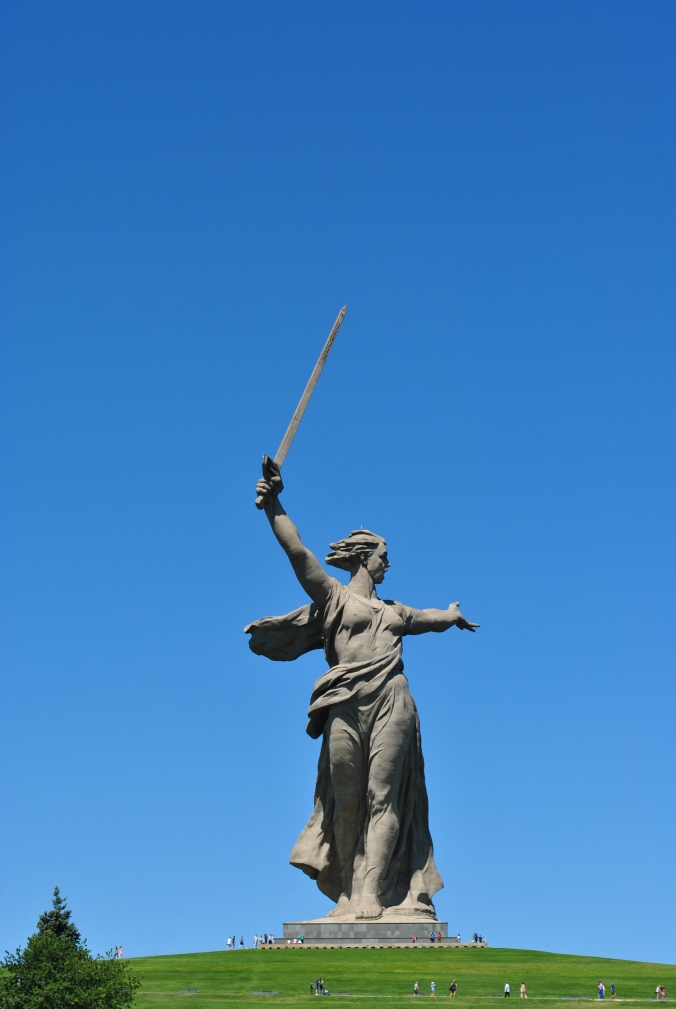
Mamayev Kurgan – Volgograd’s gigantic memorial to the Russian heroes of the Battle of Stalingrad.
It is everything it could be, just bigger: heroic, massive, and somehow very Russian, Mamayev Kurgan is the largest free-standing non-religious statue of the world and it is just overwhelming.
Huge flights of stairs (200 steps to remember the 200 days of the Battle of Stalingrad) lead through various levels of remembrance, WWII sound recordings accompany visitors on their way towards the statue of Mamayev Kurgan, that towers 52 meters tall over Volgograd like Cristo Redentor over Rio de Janeiro.
Behind the enormous concrete work lies the graveyard, marshals and snipers are buried here.
Here in Volgograd, formerly known as Stalingrad, a ferocious and deadly World War II battle between Russian and German Forces raged for 200 days, killing 2 Million people. 2 Million people. 2 000 000 people.
Some are remembered on stones, some along the walls of the hall where the eternal flame is guarded by young Russian soldiers.
So many lives ended on this very hill, so much blood, pain and despair.
A gigantic graveyard to the horror of Stalingrad.
But what always will be part of my memory of this sun-infused summer’s day wandering through the memorials to the horror of Stalingrad is the friendliness of the Russian people towards us, the Germans. They welcomed us with warm smiles and open hearts. 77 years after the Battle of Stalingrad. And they went out of their way to make us feel welcome, helping hands, not ones with swords.
This is probably an even bigger symbol than Mamayev Kurgan.
48.741901
44.538110
 The philosopher Immanuel Kant died here, when it was still Königsberg in Prussia.
The philosopher Immanuel Kant died here, when it was still Königsberg in Prussia. His mausoleum is one oft he very few things still left from German times, most of it has been removed by the Russians, including quite a number of graveyards throughout the city.
His mausoleum is one oft he very few things still left from German times, most of it has been removed by the Russians, including quite a number of graveyards throughout the city. Damaged almost beyond recognition in WWII, the easily accessible Baltic seaport became Russian, an enclave between Lithuania and Poland, all the Germans had to go.
Damaged almost beyond recognition in WWII, the easily accessible Baltic seaport became Russian, an enclave between Lithuania and Poland, all the Germans had to go.





































































































